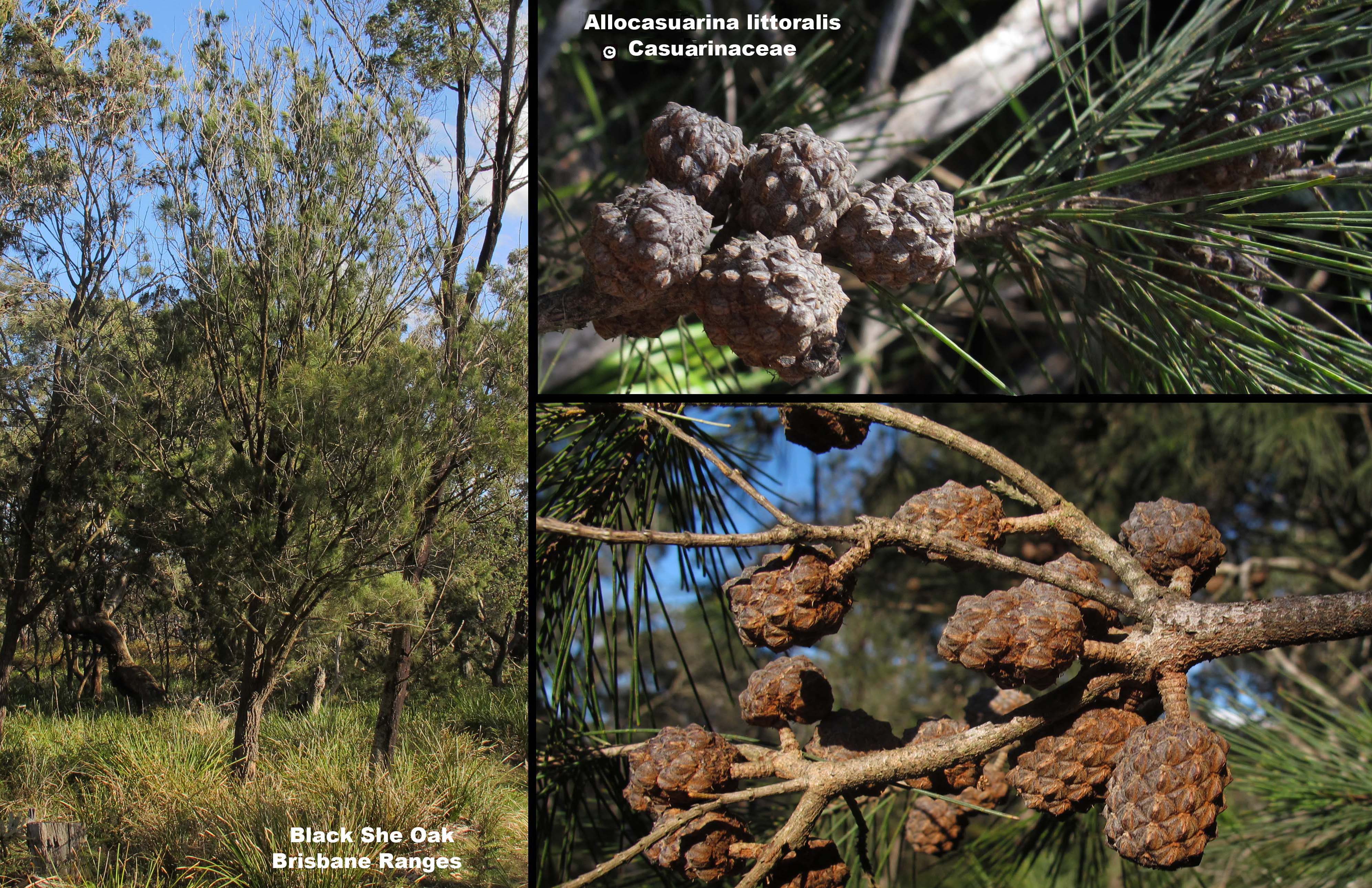
Black She-oak
Allocasuarina littoralis
Erect dark tree to 8 m with dark deeply-fissured bark. The leaves are actually branchlets. Female flowers reddish to crimson whereas the dark brown male flower spikes are crowded.
| Details | |
|---|---|
| Flora Type | Trees |
| Former Scientific Name | Casuarina littoralis |
| Distinctive Features | If you look with a hand lens there are 6-8 erect teeth at the base of each branch segments _ these are the true leaves. They do not overlap as in other species. Cylindric cones 30 x 20 mm, sometimes sharply pointed. |
| Biology | Perennial. Found on well-drained soils, sands, clays and rocky slopes, especially near the coast. Male and female flowers are found on separate plants. |
| Native Status | Native |
| Flowering Time | Mar-Jun |
| Taxonomy | |
|---|---|
| Phylum | Tracheophyta (Vascular Plants) |
| Class | Magnoliopsida (Flowering Plants) |
| Order | Fagales |
| Family | Casuarinaceae |
| Genus | Allocasuarina |
| Species | littoralis |
In NSW the Aboriginal people used the branchlets as bedding for sleeping in damp places. These trees indicate a safe place to camp. Bird-attracting trees, providing nectar, food and nesting materials for birds, and a food plant for caterpillars.
| Interesting Facts | |
|---|---|
| Similar Species | Similar to Forest Oak A. torulosa. |
| Native Status | Native |